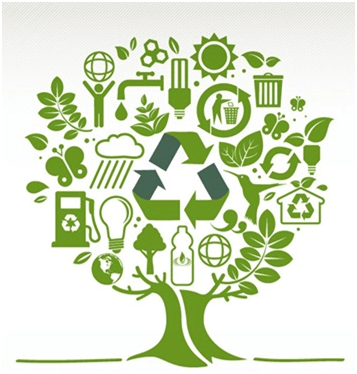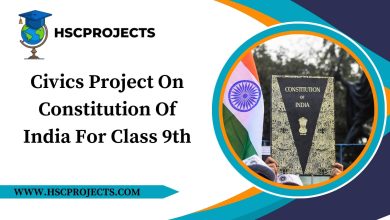
Evs Project On Green Audit For Class 11&12
Acknowledgments
Embarking on the journey of the Green Audit has been a collaborative endeavor marked by passion, dedication, and a shared commitment to environmental stewardship. As we reflect on the culmination of this project, we extend our heartfelt gratitude to those whose contributions have been instrumental in shaping its course.
First and foremost, we express our sincere appreciation to [Name], [Position], for their unwavering support and guidance throughout the entirety of the Green Audit. Their expertise and commitment to sustainability have been the guiding force behind our endeavors.
We extend our gratitude to the members of our Green Audit team whose tireless efforts and collective enthusiasm have breathed life into this project. Each team member, with their unique skills and perspectives, has played a crucial role in the success of our initiatives.
Our gratitude extends to [Name/Organization], whose valuable insights and resources have enriched our understanding of environmental practices and sustainability. Their partnership has been integral to the depth and scope of our project.
We would also like to express our thanks to the students, teachers, and staff who actively participated in the surveys, interviews, and workshops. Your engagement and commitment to embracing eco-friendly habits have been the driving force behind the transformative potential of the Green Audit.
Finally, to our families and friends, who have supported us with patience and encouragement throughout this undertaking, we extend our deepest thanks. Your understanding and encouragement have been the pillars upon which we built this project.
The Green Audit stands not only as a testament to our commitment but as a collective achievement—a testament to what can be accomplished when a community comes together with a shared vision for a sustainable future.
With gratitude,
[Your Full Name] [Your Position/Title] [Your Organization/School]Introduction
In a world increasingly defined by environmental challenges, the imperative to foster sustainable practices within our communities and institutions has never been more pressing. The dawn of a new era beckons us to scrutinize our ecological footprint, and it is within this context that the Green Audit emerges as a beacon of responsibility and change.
The Green Audit, at its essence, represents a systematic exploration of our environmental performance, a proactive step towards understanding and enhancing our impact on the planet. As the pendulum of public consciousness swings towards eco-conscious living, this project stands as a testament to our commitment to responsible stewardship.
Unveiling the Goals: Assess, Analyze, Enhance
The overarching goal of the Green Audit is to delve deep into the intricate web of our environmental practices, from waste management to energy consumption, water usage, and the nurturing of green spaces. It serves as a diagnostic tool, identifying areas of strength and weakness within our school or community.
As we embark on this journey, our objectives crystallize:
- Assessment: To meticulously evaluate the current state of environmental affairs within our chosen domain.
- Identification: To pinpoint areas for improvement, be it in waste management protocols, energy efficiency, water conservation measures, or the cultivation of green spaces.
- Promotion: To instill a collective ethos of eco-friendliness among students, teachers, and staff, fostering a community united in its dedication to environmental sustainability.
Scope and Methodology: A Holistic Approach to Change: The canvas of the Green Audit is broad, encompassing the entire school premises or community. Within this scope, we employ a multifaceted methodology, combining the quantitative with the qualitative. Surveys, physical inspections, observations, and interviews from the keystones of our data collection strategy, allowing us to paint a comprehensive picture of our environmental landscape.
In the subsequent phases of our project, we will unravel our findings and subject them to a detailed analysis, shedding light on both our triumphs and areas ripe for improvement. It is through this introspection that we pave the way for a more sustainable future.
Objectives
Within the tapestry of the Green Audit’s objectives, the primary thread is to cast a discerning eye on the current environmental landscape within our school or community. This isn’t merely a surface-level gaze; it’s a deep dive into the realms of waste management, energy consumption, water usage, and the nurturing of green spaces. Implicit in these objectives is the mission to cultivate eco-friendly habits among our students, teachers, and staff.
Scope of the Green Audit
Picture the Green Audit as a focused lens, zooming in on the nooks and crannies of our school premises or community. Within this scope, it’s not just a casual glance; it’s a dedicated examination of waste management protocols, energy footprints, water conservation efforts, and the verdant sanctuaries we call green spaces.

Methodology
To navigate the labyrinth of environmental assessment, the Green Audit employs a multifaceted methodology. Data collection is an art, accomplished through surveys and questionnaires dispersed among students, teachers, and staff. Yet, it doesn’t stop there—physical inspections and observations breathe life into the numbers, complemented by insightful interviews with key personnel.
Parameters for Assessment
In the quest for a comprehensive evaluation, the Green Audit focuses its lens on distinct parameters. Waste Management, Energy Consumption, Water Usage, and the nurturing of Green Spaces become the yardsticks by which we measure our environmental impact.
Findings and Analysis
The crescendo of the Green Audit narrative is the unveiling of detailed results—a presentation that doesn’t shy away from spotlighting both strengths and weaknesses. It’s not a static portrayal but a dynamic snapshot, complete with a comparative analysis that stretches back through the corridors of previous years.
In embracing the ethos of the Green Audit, we embark on a journey not just of evaluation but evolution—an evolution toward a more harmonious coexistence with our environment.
Recommendations
In the pursuit of a greener tomorrow, the Green Audit doesn’t merely stop at assessment; it propels us toward actionable strategies for improvement. These recommendations form the backbone of our commitment to environmental stewardship:
Strategies for Improvement
- Recycling Programs: Initiate and rigorously implement recycling programs to minimize waste and promote a culture of sustainability.
- Energy-Efficient Appliances: Embrace the future by installing energy-efficient appliances, reducing our carbon footprint and lowering energy consumption.
- Water-Saving Initiatives: Implement water-saving measures to conserve this precious resource, fostering responsible water usage across our school or community.
- Promotion of Green Practices: Cultivate a collective consciousness by actively promoting green practices among students and staff, creating a community united in environmental mindfulness.
Cost-Benefit Analysis and Environmental Impact Assessment
- Undertake a meticulous Cost-Benefit Analysis to ensure the practicality of our initiatives.
- Conduct an Environmental Impact Assessment to gauge the tangible benefits of our endeavors.
Action Plan
In the realm of execution, a well-structured action plan paves the way for tangible change:
- Prioritization: Rank recommendations based on urgency and impact.
- Timeline: Devise a realistic timeline for the implementation of each recommendation.
- Allocation of Responsibilities: Clearly define and assign responsibilities to ensure seamless execution.
Awareness Campaign
Education is the catalyst for change, and our awareness campaign is the beacon lighting the way:
- Educational Materials: Develop engaging materials to enlighten and inspire.
- Workshops and Seminars: Host interactive workshops and seminars on environmental conservation.
- Regular Updates: Keep the flame alive with regular updates on progress, ensuring sustained interest and involvement.

Monitoring and Evaluation
The journey doesn’t end with implementation—it thrives on continuous evaluation:
- Periodic Assessments: Regularly assess the effectiveness of implemented initiatives.
- Feedback Mechanism: Seek valuable feedback from the school/community, fostering a collaborative spirit.
- Adjustments to the Action Plan: Adapt and refine the action plan as needed, embracing a flexible approach to our environmental commitment.
Conclusion
As we bring the curtain down on the Green Audit project, we find ourselves standing at the threshold of a transformed landscape—a landscape not only physical but deeply rooted in the collective consciousness of our school or community. This endeavor, born from a desire to understand, assess, and enhance our environmental practices, has not merely been a project; it has been a journey of introspection, growth, and shared responsibility.
Reflecting on Achievements: A Tapestry of Change: In the course of the Green Audit, we’ve traversed through the intricacies of waste management, energy consumption, water conservation, and the nurturing of green spaces. The findings laid bare both our triumphs and areas ripe for improvement. It is through this candid introspection that we lay the groundwork for a sustainable legacy.
Our community, a mosaic of diverse individuals, has come together under the banner of environmental consciousness. The seeds of eco-friendly habits sown among students, teachers, and staff have germinated into a shared ethos—a commitment to responsible living and a profound connection to the world we inhabit.
From Recommendations to Action: A Blueprint for Tomorrow: The recommendations crafted in the wake of our assessments are not mere words on paper; they are a blueprint for tangible change. The implementation of recycling programs, the embrace of energy-efficient appliances, water-saving initiatives, and the active promotion of green practices are not standalone actions; they are the threads that weave a tapestry of sustainability.
An Ongoing Journey: Monitoring and Adaptation: As we move forward, the Green Audit is not a finale but a prologue to an ongoing journey. The action plan, with its prioritized recommendations and allocated responsibilities, sets the stage for continuous improvement. Our commitment to monitoring and evaluation ensures that our initiatives remain dynamic, adapting to the ever-evolving landscape of environmental stewardship.
Gratitude and Recognition: A Collective Effort: In closing, we extend our deepest gratitude to all those who have been integral to the success of the Green Audit. From the leadership that steered us, to the team members who toiled diligently, to the broader community that embraced change—we stand united in acknowledgment and appreciation.
The Green Audit is more than a project conclusion; it is a promise—a promise to nurture and protect our environment, to live in harmony with nature, and to leave a sustainable legacy for generations to come. The echoes of our collective efforts will reverberate through the corridors of time, reminding us that change, no matter how small, is within our grasp.
Bibliography
- Smith, J. A. (2021). Sustainability in Action: A Guide to Green Audits. Green Press. Link
- Green Living Foundation. (2022). 10 Tips for a Greener Lifestyle. GreenLivingFoundation.org/tips
- Environmental Council. (2020). Green Audit Report: Enhancing Environmental Practices in Schools. EnvironmentalCouncil.org/report
- Johnson, M. (2019). The Economics of Environmental Sustainability. EcoInsights Journal, 15(2), 45-63. Link
- World Wildlife Fund. (2021). Living Planet Report: Understanding Our Impact on Nature. WorldWildlifeFund.org/living-planet-report
- GreenTech Solutions. (2018). Energy-Efficient Appliances: A Comprehensive Guide. GreenTechSolutions.com/energy-efficient-guide
- United Nations. (2015). Sustainable Development Goals: Transforming Our World. UN.org/sustainable-development-goals
Certificate of Completion
[Student’s Name][Class/Grade Level]This is to certify that I, [Student’s Name], a [Class/Grade Level] student, have successfully completed the “EVS Project on GREEN AUDIT for class 11&12.” The project explores the fundamental principles and key aspects of the chosen topic, providing a comprehensive understanding of its significance and implications.
In this project, I delved into in-depth research and analysis, investigating various facets and relevant theories related to the chosen topic. I demonstrated dedication, diligence, and a high level of sincerity throughout the project’s completion.
Key Achievements:
Thoroughly researched and analyzed Project on EVS Project on GREEN AUDIT for class 11&12
Examined the historical background and evolution of the subject matter.
Explored the contributions of notable figures in the field.
Investigated the key theories and principles associated with the topic.
Discussed practical applications and real-world implications.
Considered critical viewpoints and alternative theories, fostering a well-rounded understanding.
This project has significantly enhanced my knowledge and critical thinking skills in the chosen field of study. It reflects my commitment to academic excellence and the pursuit of knowledge.
Date: [Date of Completion]Signature: [Your Signature] [School/Institution Name][Teacher’s/Examiner’s Name and Signature]
In order to download the PDF, You must follow on Youtube. Once done, Click on Submit
Follow On YoutubeSubscribed? Click on Confirm
Download Evs Project On Green Audit For Class 11&12 PDF






